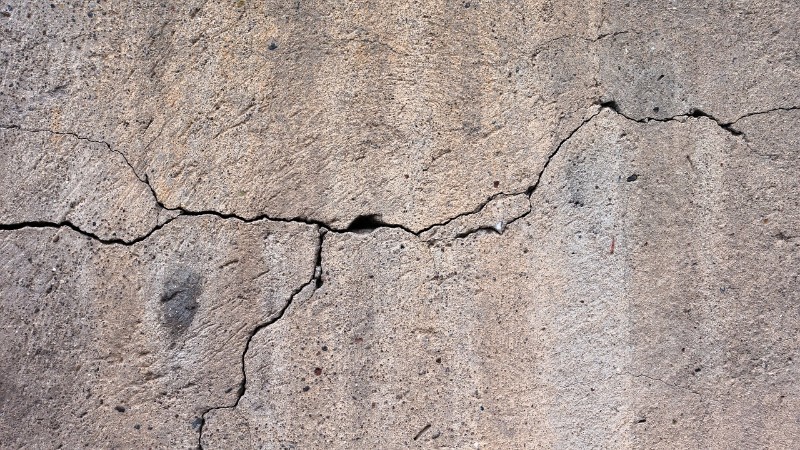Questions and suspicions abound as to if and why does concrete crack. Is it normal for concrete to crack, what makes it crack, and where could it or should it crack? And does cracking mean the job was done poorly or that the concrete might be defective? In this post, I will address the most common type of cracking and how we work to control it through concrete jointing.
First, it is not only normal, but expected that concrete installed beyond certain dimensions will crack. To help you understand why it cracks, consider that water constitutes 15-20% of the volume of the concrete, and this is what makes the concrete mix workable. This water starts to evaporate, or hydrate, as soon as the concrete starts to set, and as it does it starts to build up considerable stress due to the loss of that volume of water. At some point this stress can build enough to cause a crack in either a weaker area or where other forces may be magnifying the stress on the new concrete.
It’s not only normal, but expected that concrete will crack.
Now, our goal is to understand where these weak or high stress points may be, and to take measures that control that crack potential. A sidebar here, one may occasionally hear someone talk about contraction joints, or control joints in concrete, or even expansion joints. A control joint and contraction joint are the same thing, and an expansion joint serves a similar, albeit broader role. For the purposes of this explanation, I will just use the term control joint – a joint installed to “control” the expected cracking in the concrete. As I conclude this segment, I’ll mention the broader role of the expansion joint.
For the purposes of this explanation, I will just use the term control joint – a joint installed to “control” the expected cracking in the concrete.
Back to the control joint and controlling the crack. If the new concrete were simply left on its own, it would probably crack and the crack would be visible on the surface and somewhat meandering, or random – not the desired outcome. To prevent this, we create these weak areas by installing control joints in or near predictably weak or higher stress areas. These joints are most typically saw cut into the concrete as soon as we can do so without damaging the new concrete – 12 to 24, or even 48 hours after placement, depending on conditions – and installed at, or as close to, dimensions recommended by the American Concrete Institute – ACI.
Generally speaking, ACI provides guidance as to how far apart and how deep these control joints should be to best assure a controlled relief of the concrete stress. Now, I could get into the finer details of these specifications and how they fit into neatly imagined design segments, but I’ll skip that and just note that the real world installations frequently provide real challenges in figuring out exactly where these joints should go. We are tasked with installing joints that control potential cracking based on ACI ideals, but without greatly interfering with the design aesthetic. This task is sometimes impossible and we just have to rely on experience in determining where to install these joints. A mix of art and science.
Controlling cracks is a mix of art and science.
This approach serves us well, but occasionally we do get cracks in unwanted places. This is just a fact of the medium and not much can be done to insure that it won’t happen. Accordingly, we can’t guarantee that it won’t crack, nor that we can do much to fix one once it does. If it is really bothersome, though, we can sometimes work to conceal it somewhat, there is a cautionary note worth mentioning here – sometimes a fix looks worse than just leaving it alone.
Sometimes a fix looks worse than just leaving it alone.
Back to the expansion joint. The expansion joint can serve as a control joint, but additionally provides room for the expansion and contraction of concrete during temperature changes, and cushion against adjacent structures that may move differently during freeze/thaw cycles.
To close, I have addressed only the most common type of crack. There are others to consider when thinking about why does concrete crack – plastic shrinkage – caused by rapid surface drying, loading cracks – caused by things like your neighborhood garbage truck or roofing contractor, and I may address those later, but that’s all for now.

